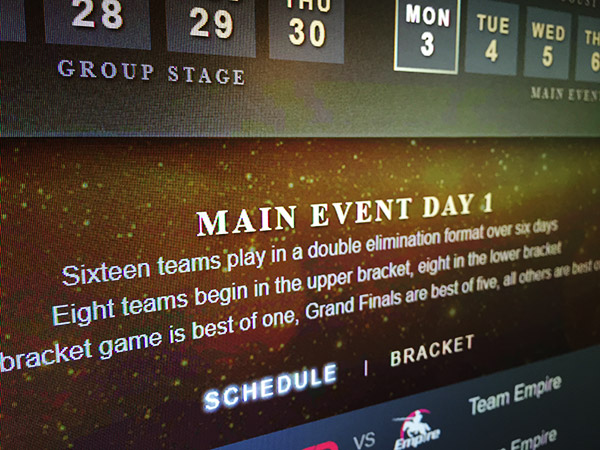To display the advanced statistics and information from your League of Legends match in Toornament, you just need to add its “Match URL”.
Here’s how to do it:
Category: Tutorial
[Organizers] Two more options to award points
[Organizers] Make your own March Madness on Toornament!
One of Basketball fans favorite moment of the year is the ever-popular “March Madness”, where the 64 best NCAA teams duke it out all over March week ends.

Emulating the March Madness format on Toornament is very easy: use our “Bracket Groups” format!

Now use these settings:
- Create 4 groups, each one being an equivalent of a NCAA Division
- Set them to “Single Elimination“, “16” as Size and “1” group per stage (no need to go into the Advanced Settings)

You’re now set to start your March Madness-like tournament, with each Division leader going to the Playoffs, aka the “Final Four”. Enjoy!
Alternatively, you can have all the Divisions played in a single Stage, with 64 participants split into 4 groups within a single stage:

[Organizers] [Developers] How to use our API
Following the release of our Capcom Cup 2015 report, we wanted to provide more inspirations on how you could benefit from our free open API.
[Organizers] Your tournament’s information: what, when, where?
We’ve previously talked about the importance to fill all the important informations of your tournament. This topic is still underestimated, as we, as media and eSports fans, still struggle too often to get infos on major tournaments. This shouldn’t happen anymore.
So, let’s see today which information you should push and more importantly, when and where.

What?
Be sure you’ll have to answer these questions several times. Better have them displayed.
General
- Schedules
- Dates and location
- Streams, results
Participants
- Tournament format
- Rulebook (more about this topic here)
- Money prize split
- Participants list
Audience
- Entry fee
- Animations
These are the critical informations you need to deliver. The next points are “When ?” and “Where ?”
When?
Well, asap of course. Don’t wait the last moment to publish all your informations. Participants, audience, medias and partners need to organize themselves too. Just add information as soon as you have them confirmed.
This last part is important, as people won’t read some of your informations twice and later correcting a false information may be too late. Make sure you have them double-validated and tripple-locked before pushing them into the public.
Where?
The best way is to centralise all your information in one location, generally your official website. Social networks are not suited to display important informations, as they mostly function as a flow. A pinned tweet or link in bio won’t cut it.
Now that you made sure all the informations are available soon enough and accessible enough, you can spread them in famous sites and platform (do you know Toornament?) in case your primary base is down for some reason.


